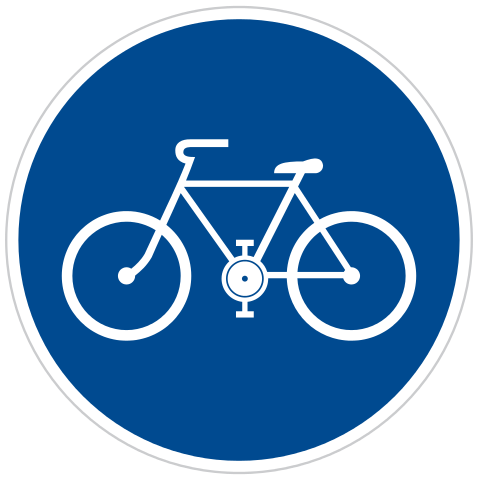- 4 Posts
- 92 Comments
Another option for you: Bike Friday
They’re made and customized to order (tall is no problem). They’re also tough: one of their expedition models is designed for 150kg rider weight. I’m sure they can ship internationally.
If you look around, I’m sure you can find a custom builder in the UK too.
That’s great to know. I’ll keep that in mind when I need a new set of tires.

 3·10 days ago
3·10 days agoNot taking advantage of free street parking is crazy. Think of all that extra storage and space in your garage when you don’t have to park in it!
 3·11 days ago
3·11 days agoOnly 500Wh with two tanks? That’s, at most, parity with a single lithium-ion battery e-bike; for the same weight too.
The 38 tires should really help on the rougher paths. Maybe I’ll pick them up when I wear out my current set.
I haven’t tried the front rack yet. Not out of dislike but because I usually pack nothing or way too much. 🤣
Same goes with fenders. I haven’t installed them, and probably won’t. It’s too sunny where I’m from.
The frame is made in Vietnam. The quality is alright, not amazing but certainly appropriate for the price point. No issues with it so far and better than some frames I’ve seen from the PRC.
It can roll without a rolling rack, but not easily. Good enough for a few feet here and there. I suggest going for the rolling rack if you want to push it around train platforms and such. The saddle is padded on the underside though. It’s nice when going up stairs.
One more thing: the drive train is exposed when folded. Watch out for dirty chains and be careful when loading it into a car. It’s easy to damage the derailleur hanger or disk brake if it tips over. Support the bike with a box or tie it down when transporting it.

 11·11 days ago
11·11 days agoFYI, these are speed cameras, not red light cameras. They’re set such that you’d need to be doing 36+ mph in a 25 mph zone.
I own a Tern Verge D9. It’s a functional and sporty folder.
The Verge is a snappy feeling ride. Think road-bike handing. The tires are also good, but at 30mm it won’t like anything rougher than hard-pack dirt. They’re also ISO 451, not the more common 406. This size has fewer tires to choose from for a slightly nicer roll. It’s up to you to not if that’s a worthy hassle.
FYI, the magnetic latch is terrible. You will have chipped paint on the fork. I don’t mind but you may.
Careful folding and unfolding. The stem fold likes to bite the brake and shifting lines. That will screw up shifting.
The matching rack they sell uses oversized tubes. You may need to replace the hooks on existing panniers. Also the racks sits closely to the pedals, so large things may have some foot overlap.
I’m sure I have other thoughts floating around about the Verge D9. Ask anything you’d like to know about it and I’ll try answering.

 8·12 days ago
8·12 days agoA white paper from a civil engineering arm of a university closely associated with TX DOT citing MDOT?
“It is difficult to get a man to understand something, when his salary depends on his not understanding it.” - Upton Sinclair
 1·13 days ago
1·13 days agoThe southwest of the US gets really hot for long periods of time. For example, Pheonix Arizona has four months of the year with a daily mean temperature above 30 C and highs around 45 C. Pheonix is also part of the Sonoran Desert, meaning water itself is hard to get. Running a water tap for minutes to fill a cup of mildly cool water is deeply frowned upon.
It’s unpleasant to say the least. Although the heat is not as bad as the rumors I hear about Finnish mosquitoes.

 9·13 days ago
9·13 days agoI’m bad at following instructions. Here’s several tips. :)
- A washing bag (e.g. Scrubba). The bag and a dry bio-compatible laundry soap weighs the same as one pair of wool socks. Using it means you can cut out underwear/shirts/socks bulk for a slightly higher camp chore load. Very useful for weight/space sensitive camping and doubles as a dry bag!
- Prefer good clothing over sunscreen (big hat, long-sleeved shirts, buff, sun gloves, etc). It’s lower weight, less greasy, and doesn’t run out. When using sunscreen, stick form tends to be light and easy to pack.
- Camp shoes. Always bring them. Crocks, thin flip-flops, anything but a tight shoe that you spent the last 12 hours in.
- Avoid cotton in general, but also look for quick-dry clothing. Being wet sucks. Being wet for long periods of time can be dangerous.
- Umbrellas are amazing. Shade when there is none and amazing at avoiding wet-out. Very useful for short trips and car camping, though I sometimes bring it backpacking even with the added weight.
- Light (1lb / 0.5 kg) camping chair. If you’re young enough you could skip this, but my god is it worth the weight after a long day.
- Wear warm clothing in your sleeping bag/quilt. Bag ratings are inconsistent, often assume you’re wearing clothes, and are labeled for “won’t kill you” rather than “you’ll sleep like a baby.”
- A good sleeping pad with a solid R value. It’s as important as your top sleeping layer.
- Dry electrolytes, especially in warmer areas, like SaltStick or Gatorlytes. Hypotonic dehydration can sneak up on you and you cannot escape it by drinking more water. This is particularly dangerous with aerobic camping, like backpacking or bikepacking. Hypotonic dehydration can be mitigated with the food you pack, but it’s a lot to plan ahead on and complicates re-hydration with caloric intake. Do not avoid high-sodium foods unless your doctor has you on a low-sodium diet (in which you should also discuss with your doctor about your outdoor activities).
- Sleep with your electronics. Cold weather will kill your phone’s battery.
- A portable bidet (e.g. CuloClean). There are many places where you must pack out TP (sometimes everything). Less TP means less to carry in and out. It’s also very clean feeling.
- Similarly, WAG bags are nice. Zero trace and you don’t even need to dig a cat hole.
- Ear plugs. Nature is loud sometimes. People in campgrounds are even louder.
- A small towel or sponge to wash with. It’s nice to wipe off sweat and dust, even if it’s not as good as a full shower. It’s multi-purpose too. Moisture on your single-walled tent? A quick wipe and no indoor rain for you.
 8·14 days ago
8·14 days agoCome to the southwest during summer where taking a shower doesn’t involve the hot water tap.

 17·15 days ago
17·15 days agoThat’s exactly what they’re called and they’re getting popular. Find a bike bus near you! Bike Bus World

 12·17 days ago
12·17 days agoAt least Oregon has nature on your side. All kinds of freeway expansions have exorbitant costs because they’ll require blasting away mountains or encroaching the coastline. So far y’all have your heads on straight when the who-pays-for-it question arrives. Meanwhile, here in California cost is no measure as we’re advancing a bill that streamlines widening state route 37 into sensitive wetlands, only for that new pavement be literally under water within 25 years.
Keep up the good fight, neighbor.

 3·17 days ago
3·17 days agoNHTSA FARS 2023 ARF dataset reports that 45-54 has a higher accident rate than 55-64, 65-74, or 75+ groups. The most fatal-accident prone age groups are 15-20, 21-24, and 25-34.
Every age group will flunk out, young and old.

 7·17 days ago
7·17 days agoWe’re already past the “fuck it” phase. 16.7% of fatal crashes involve unlicensed drivers (NHTSA FARS 2023 ARF).
A very common mistake is to commute what you’d drive. In many cases you’d do better on paths and neighborhood streets. For example, maybe part of an unavoidable highway segment has a frontage road. Hop off onto the frontage for that segment, even if it’s technically 60 seconds slower.
Google Maps is a decent start, though imperfect in detail (routing through a busy park on footpaths, or not routing through a park that has a good dirt path). Use street view and OpenStreetMaps to explore ways that auto routing won’t pick.
+1 to the suggestions on starting with shorter trips. They’ll work out any kinks in your setup and give you time to become confident on your bike.

 4·20 days ago
4·20 days agoI’m super lucky that the cities around me are removing minimum parking laws! Most political drama is around parking meters because, gasp, how dare we charge reasonable fees to keep our limited street parking churning and available!

 2·20 days ago
2·20 days agoI’ve asked and haven’t had luck yet. Still, it’s good advice as asking costs nothing. :)

 11·20 days ago
11·20 days agoThe bike shops around me don’t own their shop. It’s usually some rented space in a car oriented strip mall. No racks is the norm for these car-oriented places.
One local shop solves this with automatic doors and a small inside rack if you don’t have a kickstand. And every LBS around me doesn’t mind customers rolling in with their rides.
If there’s something we can do, it’s to show up to city councils and ask for bike loops/staples for all our downtown businesses. Then we’ll have bike parking for every local shop, including bike shops.

If Dallas Texas can abolish parking mandates to improve housing and small business, so can you!